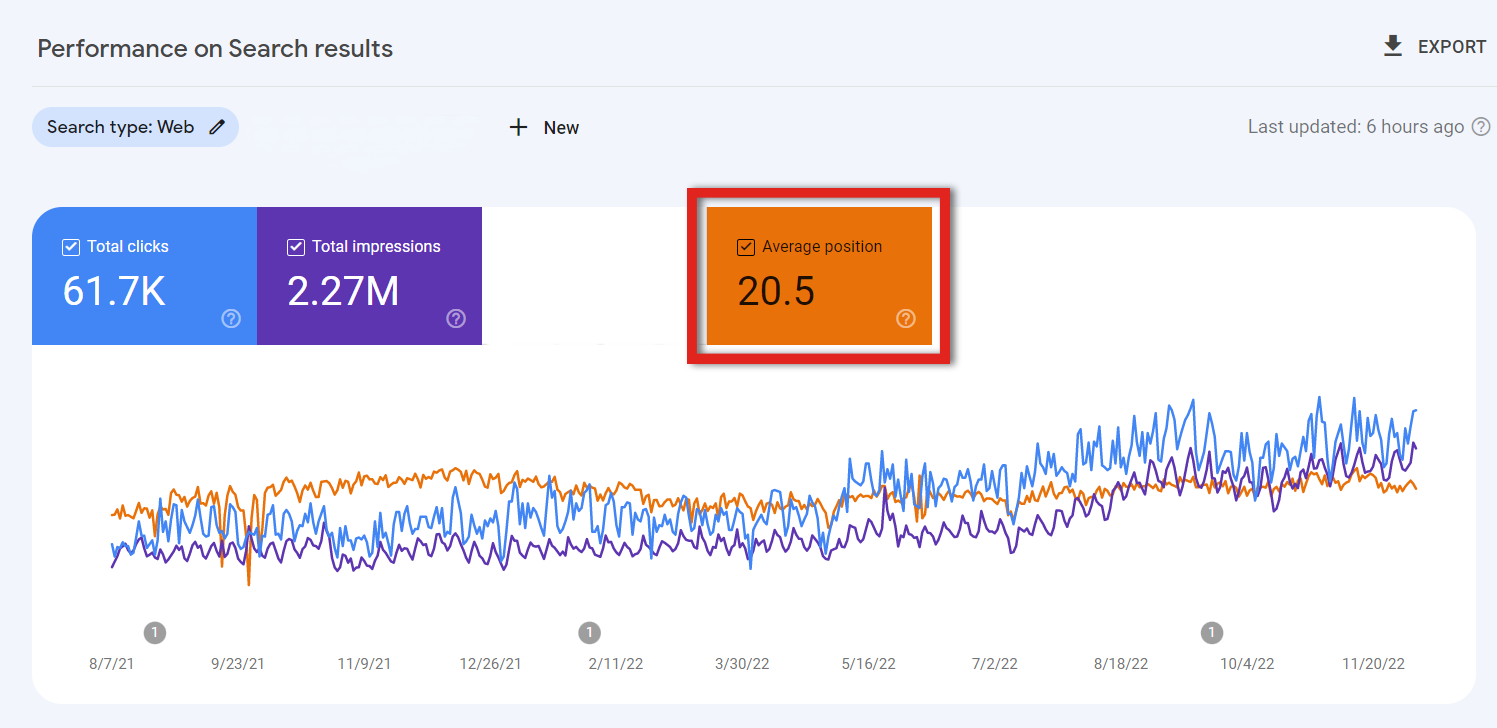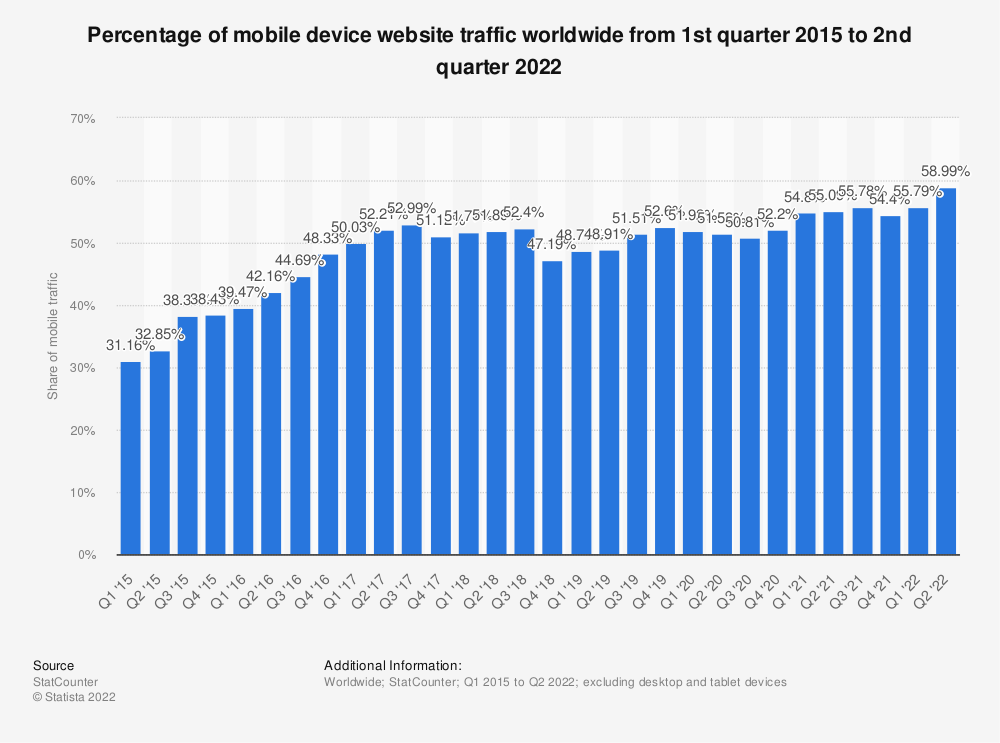How important is monitoring your website’s URLs once you hit “publish”?
A lot of beginner webmasters, business owners, content marketers, and copywriters believe that publishing an article is the end of their SEO process.
In fact, it’s just the beginning.
For your URLs to reach your audience and start ranking on the first SERP, you have to track them and fix any issues that might arise amid the process.
After all, a piece of content that is never visible is just like one that is never written!
In this article, we’ll give you everything you need to know about Google search console so that you maximize your SEO endeavors and show up on the first search engine results page (SERP).
What Is Google Search Console (GSC)?
Google Search Console (previously Google Webmaster Tools) is a very powerful tool that gives you valuable insights into how your website or specific URLs are performing in Google’s search results.
You can use this information to make changes to your site in order to help boost its performance and visibility.
The tool also helps you manage issues regarding security, hacking attempts, broken links, and more so that you can increase your website’s ranking.
An Overview of Google Search Console Insights
Search Console Insights is a new tool designed specifically for content creators, content marketers, business owners, and publishers.
It helps them understand how audiences discover their site’s content and what resonates with them.
Search Console Insights derives its data from Google Analytics and Google Search Console.
How Search Console Insights Helps Your Business
Search Console Insights enables site owners to understand what content is performing well, how new content is doing, how people discover your content, and what articles link to your website.
As a result, you start making more informed decisions to improve your website visibility and traffic.
How Google Search Console Is Useful for Your SEO Strategy
Identifying Your Performance on Search Results
Google Search Console helps you gain more insight into your performance by allowing you to view the key strengths and weaknesses of your site’s search presence.
That way, you figure out what caused the subpar or the top-ranking performance of a blog post, for example, by analyzing the following key metrics:
- Queries and pages: Identifies your top-ranking and underperforming queries and pages in terms of impressions and clicks.
- Countries: Gives you a glimpse of the countries that see and interact with your website.
- Devices: Highlights the top-used (and the least-used) devices that your audience opts for to access your website such as desktop, mobile, and tablet.
- Search Appearance: Showcases the number of impressions and clicks that your rich results (such as your FAQ schema, videos, and images) could get on search results.
- Dates: Provides the total number of impressions and clicks your website got during a specific day.
Understanding what made a specific page or blog post earn a good position will help you repeat the process.
Auditing Your Content
If you want to refresh your underperforming content, Google Search Console enables you to upgrade your content with topically driven keywords.
Google’s “Average Position” metric is a more precise way to estimate where your site appears because it encompasses the results from diverse devices, geographies, and individualized searches.
You can use such data when building useful content that attracts attention so that you can assess and improve it as needed.
Improving Your Click-Through Rate (CTR)
The click-through rate (CTR) is the percentage of users who clicked on a link to your website after they saw it in their search results.
When you’re trying to determine why traffic has decreased, CTR is one of the metrics that can be useful in measuring how well-optimized your site is.
You can find information about your page’s CTRs by going to the “Performance” report and checking the box for “Average CTR.”
To enhance your CTR, you want to consider rewriting your…
- SEO/Meta Title: Adding power words, main benefits, etc.
- Meta Description: Highlighting what the article or page is about.
- Slug: Customizing the end of your URL to suit your SEO/Meta title.
Discovering New Easy-Win Content Opportunities
As you build your content base, you might start ranking for words you haven’t tackled in your content.
Using Google Search Console will help you see these topics. That way, you’ll find it easy to rank for these topics while expanding your content!
For instance, if you’ve been tackling content about “brewing espresso coffee”, “espresso brew ratio” and “brewing espresso at home”, you might as well rank for “brewing espresso at home without a coffee machine”—even if you haven’t mentioned anything about brewing without a machine.
Why is that? Because such searches can sometimes be intertwined. So the more you cover topics about espresso, the more likely it is for you to find new opportunities to cover using Google Search Console.
To discover new easy-win content opportunities using Google Search Console, go to the “Performance” tab and tick your “Average Position” checkbox.

Next, scroll down to “Queries” and sort your “Position” list from highest to lowest.

Now, you can take a look at your top-ranked search queries. Make note of these queries and see if there are any keyword phrases that you’re ranking for without targeting just yet!
Optimizing Your Technical SEO
Yes. Besides optimizing your on-page SEO, Google Search Console provides you valuable insights into how your website is performing technical-wise. Also known as “Coverage Report”, this report includes:
- Crawlability (i.e., discovery): Displays how Google discovered your URL.
- Indexing: Highlights successful and unsuccessful storing of your URL so that it starts to show up on the SERPs.
- Other Enhancements: Suggests improvements for website elements such as breadcrumbs, FAQ schema, and videos.
Technical SEO is specifically for web developers and those working on the backend of your website—but you’re welcome!
How to Make the Most of Google Search Console in Just 2 Steps
Analyze Your Performance Report
The Search Console Performance Report provides detailed information on how well your site is doing in search, including data on featured snippets. The report explores four types of searches: web, image, video, and news.
To make the most of your Performance report, change the type of search results from web searches to images, videos, or news so that you can see how your website is performing on these touchpoints.
A better practice is to compare and contrast your web search results with image, video, and news results.
Look thoroughly at your website’s metrics to dissect opportunities for improvement. Such elements include:
- Clicks
- Average CTR
- Impressions
- Average Position
For example, if you want to analyze your visibility to your audience, tracking your impressions will help you determine your most and least visible queries and pages.
To understand each element better, let’s break them down further.
Clicks
As the name suggests, “clicks” displays the number of times searchers clicked on your page on the SERP. So if you’re getting low clicks, that means another competitor could pique their interest.
To understand if you’re clicks are actually subpar or normal, you should couple it with your average CTR and impressions.
Average CTR
CTR, or Click-Through Rate, is the percentage of users who click from the search results to your website.
Generally speaking, the equation goes like this: Higher Avg. CTR percentage = Better Website Performance.
So if you look at your average CTR and find that you’re average CTR is low, it’s an indicator that your website should do better in enticing your searchers.
To get your searchers’ attention in that case, adjust your title, meta description, and perhaps your URL.
But before you act right away, you should compare your clicks and average CTR with your impressions!
Impressions
Every time a user sees your URL in the search results (even if they don’t click), it counts as an impression.
Putting your impressions, clicks, and average CTR side by side will help you relate your amount of conversion (i.e., clicks) to your amount of impressions (i.e., visibility).
For example, if you have a URL that has 428 impressions, 135 clicks, and 31.5% CTR, it’s performing well because the gap isn’t that big among your three metrics!
However, if you have a URL that has 698 impressions, 1 click, and 0.1% CTR, it means it shows up to your audience but it doesn’t pique their interest.
In that case, start by making adjustments to the copy that shows up on the SERP and see if that makes any difference!
Now, what if you’re getting low impressions in the first place? This situation entails you’re not reaching your audience.
To solve this issue, check if your URL is indexed by Google. If Google Search Console tells you it’s not indexed, then it’s the job of your web developer/technical SEO specialist.
But if it’s indexed, a good solution is to review your target keyword and topic to redo your keyword research.
Because sometimes content marketers target a competitive topic or keyword. As a result, you would need to beat authoritative websites —which can take years to achieve.
Average Position
Average Position illustrates the average ranking of your website on the SERPs. So for example, if your average position is 1, that means, you’re the top-ranking result for a specific query.
If your average position is a number between 1 and 2 (e.g., 1.8), that means you sometimes show up as the first result and other times as the second result.
In general, being on the first SERP entails having an average position of 1-10.
Thus if your average position for a specific query or page is beyond 10, it means you want to look at the abovementioned metrics side by side to see where you can make improvements.
In all, by analyzing your impressions, clicks, average CTR and average position, you can get a clear picture of the strengths and weaknesses of your website.
Optimize Your User Experience (UX)
Having a user-friendly website is a game changer. To understand how your website appears to your target audience, take a look at the “Experience” tab in Google Search Console.
Here are the elements you want to look at:
- Page Experience: Provides an overview of your URLs’ page experience on desktop and mobile devices, including issues related to your URLs’ speed, security issues, and mobile-friendliness.
- Core Web Vitals: Gives detailed reports on your website’s speed and security across desktop and mobile devices.
- Mobile Usability: Detects the URLs that aren’t usable on mobile devices and gives the number of usable URLs.
Mobile-friendliness is especially crucial because nearly 60% of 2022’s worldwide traffic comes from smartphones alone, according to Statista.

Upgrading Your Website’s Visibility With Google Search Console
Google Search Console is a powerful tool that can step up your SEO strategy.
Whether you’re a business owner, a content marketer, a webmaster or even a copywriter, Google Search Console can help you holistically improve your website’s SEO—from getting your URL to be stored to getting it to the SERP.
So if you’ve been contemplating whether Search Console is good for your SEO strategy, now is the time!
The process is simple. Just keep this guide with you as you go through the steps!
Frequently Asked Questions (FAQs)
One way to use Google Search Console is to analyze your average ranking position for every target keyword to get an understanding of how well your content is doing on search engines.
Another great way to make use of it is to look at your impressions to see if your content is showing up to your audience in the first place.
Last but not least, keep track of the queries that people use to find your site. That way, you can target these keyword phrases and quickly rank for them.
Google Analytics gives you information related to people who visit and engage with your website while Google Search Console is geared more towards helping site owners improve their ranking in search engine results pages.




